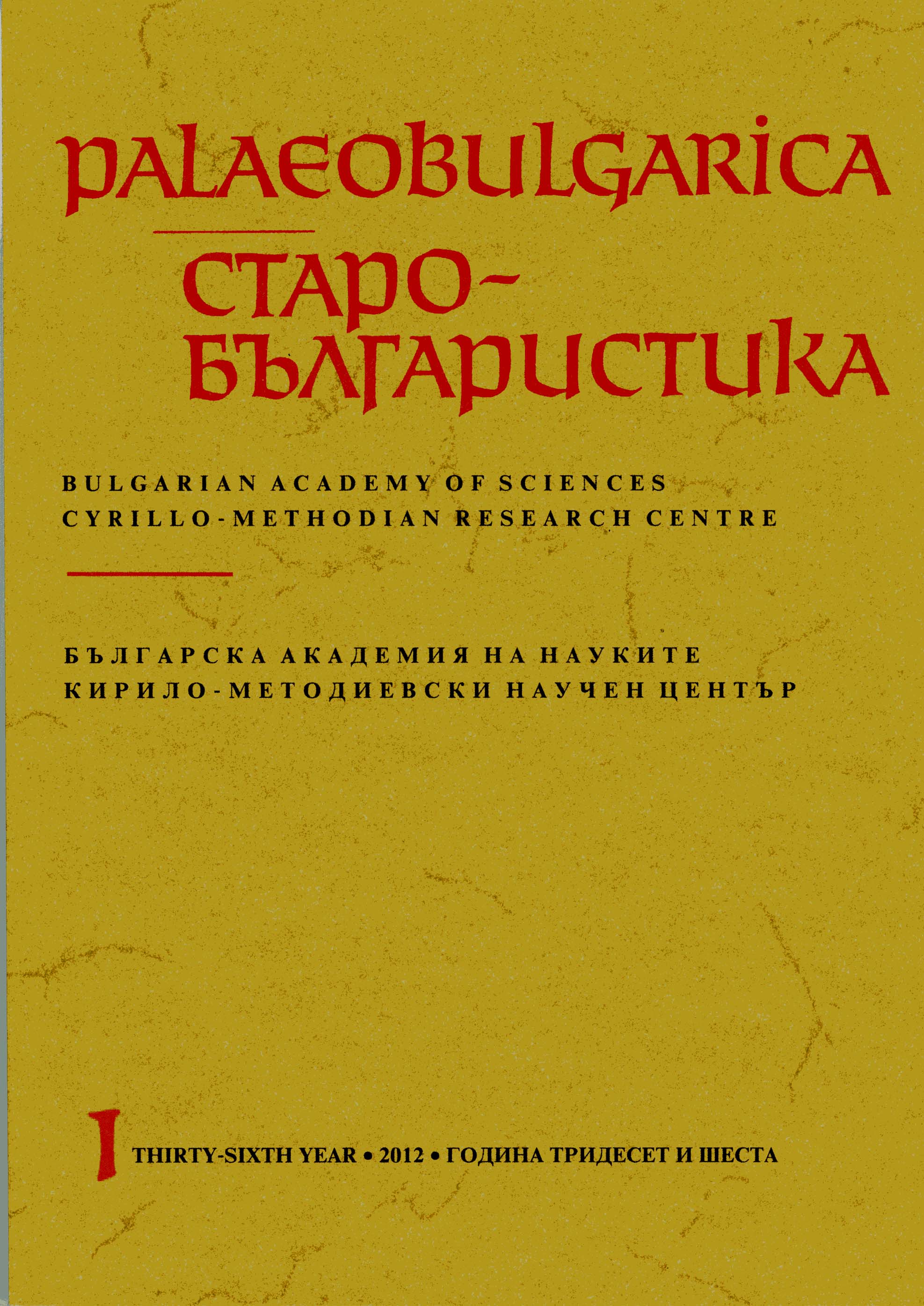Езикът на XIV век и съставът на Палаузовия сборник
The 14th Century Language and the Structure of the Palauzov Miscellany
Author(s): Anna-Maria TotomanovaSubject(s): Language and Literature Studies, 13th to 14th Centuries
Published by: Кирило-Методиевски научен център при Българска академия на науките
Summary/Abstract: The article explores in detail the linguistic innovations and their distribution in the different parts of the Palauzov Miscellany - the Synodikon of King Boril (ff.1-40), the liturgical services (ff. 41-62) and the horoi (ff. 63-102). The statistics reveal that while the Synodikon itself and the horoi share all innovative features typical of 14th century language and of the language of Patriarch Euthymius himself, the part containing liturgical services remains almost unaffected by language changes and therefore the services must have been taken and included into the book directly from their Old Church Slavonic original(s). The almost even distribution of the innovations in the Synodikon and in the horoi shows that both parts belong to the same chronological layer, viz. to the end of the 14th century when the whole book was composed. The slight prevalence of some of the most typical innovations in the horoi proves that they were translated into Bulgarian in the 14th century although one might presume an earlier translation, soon after the conversion of Bulgaria to Christianity, given the fact that they include both the Nicene and the Constantinopolitan Creeds. The conclusion that the text of the Synodikon reflects the language of the 14th century and especially the linguistic rules of Patriarch Euthymius himself seems to contradict the evidence that the Greek Synodikon was translated in the early 13th century for the Council against the Bogomils convoked by King Boril. The contradiction could be alleviated if we presume that at the end of the 14th century the Synodikon was carefully edited by the composers of the book who added new information about the history of both the Bulgarian church and the state to the old translation from the times of Boril. This would explain why this copy of the Bulgarian Synodikon, although written in the late 14th century, reflects the old Comnenian version (C) of the Byzantine Synodikon and not the one of the Palaeologians.
Journal: PALAEOBULGARICA / СТАРОБЪЛГАРИСТИКА
- Issue Year: 2012
- Issue No: 1
- Page Range: 24-37
- Page Count: 14
- Language: Bulgarian
- Content File-PDF

